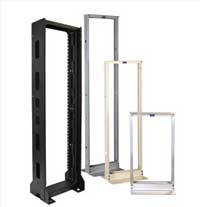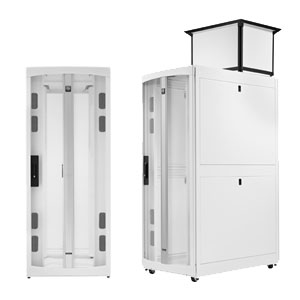When trying to decide on the best data center design and the most appropriate products, it is not always about the latest trend. What is right for one data center may not be right for another. It is important to understand the different options available in terms of server cabinets and racks, and the different advantages they can bring.
 Open Frame Racks
Open Frame Racks
- Provide a viable solution for many data center deployments, and address a variety of applications, from supporting active equipment, to providing a straightforward cable patching platform.
- Provide straightforward access to the equipment or cabling sections—without walls or side panels, the hardware is accessible from all angles, even after the installation of the cabling and active equipment.
- Provide unrestricted airflow to equipment.
- Simply access which can reduce maintenance time and costs of future changes.
- Provide load ratings up to 1500 lb (680.4 kg) for two-post racks, and up to 2200 lb (1000 kg) for four-post racks.
In essence, open frame racks are cost effective, easily accessible and durable, which makes them a sound option for telecom equipment, servers or networking with a relative low power load where cooling requirements are not a key cause for concern.
 Enclosed Cabinets
Enclosed Cabinets
- Offer airflow segregation strategies ranging from cabinet-level containment, to complete aisle containment.
- Provide a greater level of thermal management efficiency.
- Offer a much safer environment for hosting sensitive data. A variety of locking systems are available to prevent unauthorized entry, which has become a key concern for many data centers and their customers.
- Provide load ratings up to 3000 lb (1360 kg).
Designing an IT infrastructure that is going to work best for your data center involves more than just choosing between racks, enclosures and cabinets. To learn more, read the full article by Luca Rozzoni, CPI's European Business Development Manager.
Brittany Mangan, Digital Content Specialist